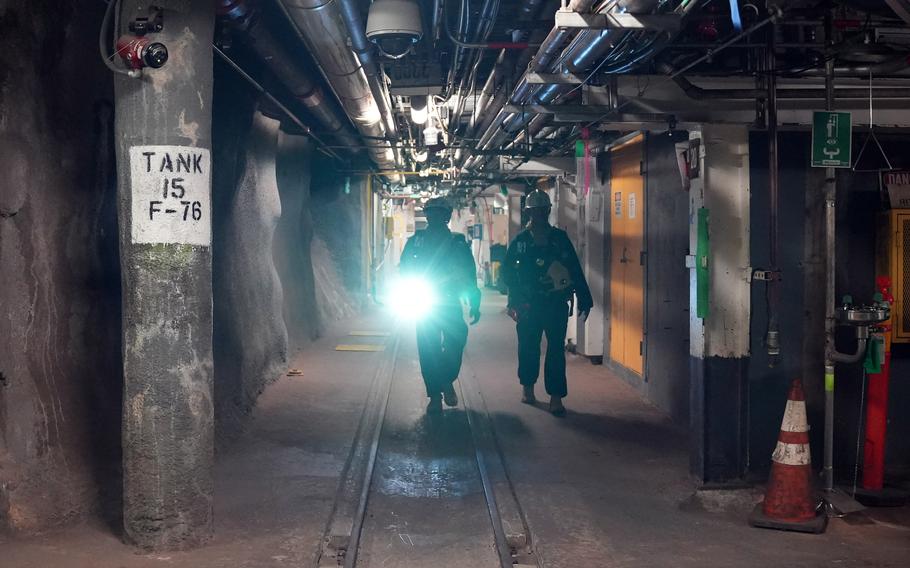
Security and fire watch team members patrol the Red Hill Bulk Fuel Storage Facility in Halawa, Hawaii, Sep. 6, 2023. (Nicholas Brown/Defense Department)
(Tribune News Service) — As the military prepares to defuel the underground Red Hill fuel storage facility, the Navy is setting up air monitoring stations across Joint Base Pearl Harbor-Hickam and several housing areas affected by the 2021 contaminated water crisis.
In a letter dated Sept. 22 to residents of JBPHH, the Navy said that starting at the end of September, temporary air monitoring stations would be set up at several locations “to collect and study air quality data from your community for a six month period, to ultimately gain a better understanding of our environment on the installation.”
The letter included a map of the stations’ locations, mostly in areas on the Navy water system, which serves 93,000 people.
Although the letter makes no mention of the Red Hill defueling, a Navy spokesperson told the Honolulu Star-Advertiser that alongside the state Department of Health and U.S. Environmental Protection Agency, “the Navy has developed and exercised comprehensive spill response plans and increased environmental monitoring efforts in advance of defueling. This air monitoring study was identified as an additional public safety measure to assess air quality if a spill were to enter a waterway during defueling operations.”
Built during World War II, the Red Hill facility’s massive underground fuel tanks store 104 million gallons of fuel and sit just 100 feet above a critical aquifer most of Honolulu relies on for clean drinking water. For years state and county officials, along with local activists, warned the fuel facility posed a potential threat to Oahu’s water supply, particularly after a 2014 spill.
The Navy insisted the aging facility was perfectly safe and that it was critical to supporting the operations of its vast Pacific Fleet. But in November 2021, jet fuel from the facility leaked into the Navy’s Red Hill water shaft, tainting the entire Oahu Navy water system. The tainted water sickened service members and military families along with civilians in former military housing areas served by the Navy waterline.
Since Dec. 3, 2021, the Navy water distribution system has been sourced only by the Waiawa water shaft, which is 6.2 miles from Red Hill.
In March 2022, Defense Secretary Lloyd Austin announced the military would permanently drain the tanks and shut down the Red Hill facility. Joint Task Force Red Hill, established to oversee defueling, is set to begin draining the tanks Oct. 16 and complete most of the defueling by the end of January.
It’s a high-stakes operation. The facility and the pipelines connecting it to JBPHH had over the years fallen into disrepair, and JTF-RH had to put both through extensive repairs and upgrades to ensure that defueling efforts don’t risk further fuel spills or threats to the island’s water supply. Military personnel have been training for the potential for spills or fires during the defueling and making preparations to respond to and contain any incident.
The Navy spokesperson said the air monitoring stations are “part of a greater spill response strategy to identify, quantify and assess potential threats to public safety, should there be a spill during the defueling of Red Hill. This deliberate, proactive approach will ultimately better inform the Navy, and improve its ability to respond to future contingencies.”
(c)2023 The Honolulu Star-Advertiser
Visit www.staradvertiser.com
Distributed by Tribune Content Agency, LLC.